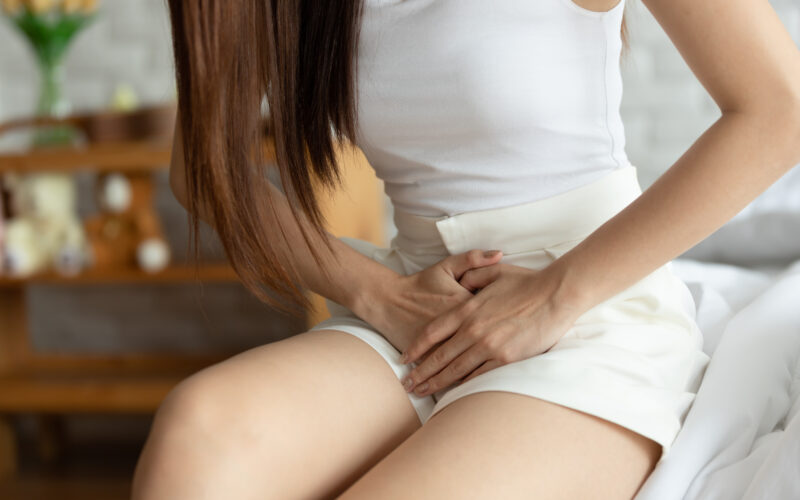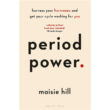Amidst all the negatives of social media, one positive is open discussion around topics that have historically (but unnecessarily) been considered taboo. Vulvodynia is one such topic, as 60,500 people Google search the topic each month. In an instructive entretien on the Beyond Basics Physical Therapy’s The Pelvic Messenger podcast, Dr. Jill Krapf (a board-certified OB/GYN and women’s sexual health expert with The Centers for Vulvovaginal Disorders) covered what women need to know about vulvodynia, including why vestibulodynia is actually the proper term for the vulvar pain many women experience with sex and tampon insertion.
What is vulvodynia?
According to Krapf, vulvodynia refers to an “abnormal pain response of the vulva, which is the outer part of the female genitalia. And that includes the opening of the vagina as well, that we call the vestibule.” Essentially, vulvodynia refers to chronic pain of the vulva, lasting more than 3 months, Krapf specified.
And while a majority of women, if they’ve heard the term at all, have heard the term ‘vulvodynia,’ Krapf clarified that most women who present with vulvar pain specifically have a more localized version called vestibulodynia, pain at the ouverture of the vagina. Clitorodynia, pain of the clitoris, is another, less common, possibility. But each of these terms, Krapf explained, only tell us où the pain is located, not pourquoi it’s occurring.
How do you know you have vestibulodynia?
The preeminent symptom of vestibulodynia is pain, i.e., pain when anything is inserted into or removed from the vagina (think: tampon insertion and removal, and sexual intercourse or a vaginal dilator). Pain may also occur with tight-fitting clothing or prolonged sitting.
Vestibulodynia may be primary, meaning that sex, tampon insertion, etc., has toujours been painful, or it may be secondary, meaning that these things didn’t cause pain formerly, but due to some triggering event, they cause pain now. (Dr. Krapf gave an allergic reaction to a yeast infection medication as an example of a “triggering event.”)
How is vestibulodynia diagnosed?
Vestibulodynia can be diagnostiqué based on symptoms, visual assessment, pelvic exam and the ‘cotton swab touch test.’ Dr. Krapf explained that, “We can usually see on exam that those glands that produce our natural lubrication–which are located at the opening area on each side of the urethra, where the urine comes out, and then down at the bottom, tucked into your hymenal tags–those can be red and irritated.”
She described the cotton swab touch test, noting “And then when we touch them with a Q tip, they’re uncomfortable. And we can touch [as little as] a millimeter outside of that area and it’s pas uncomfortable. So we know that there’s something [going on] with the glands that help to maintain that tissue of the vestibule.”
What causes vestibulodynia?
Hormonal birth control is the most common culprit behind vestibulodynia in young women
Vestibulodynia is most commonly hormonally driven, and this is called hormonally-mediated or hormonally-associated vestibulodynia. This can occur during major hormonal transitional times in a woman’s life, like during postpartum and lactation and during menopause. Still, hormonally mediated vestibulodynia is most often caused by le contrôle hormonal des naissances use [1].
Selon le Herman & Wallace Pelvic Rehabilitation Institute, “The most common cause of Hormonally-Mediated vestibulodynia in younger women (under the age of 25) is systemic birth control (i.e. oral contraceptive pills (OCPs), depo-shot, NuvaRing).” And while patients may be educated on birth control’s more common side effects like nausea and mood swings, many are not told that birth control “causes vestibulodynia, decreased vaginal lubrication, decreased thickness of labia minora, and decreased vaginal introitus size, all leading to dyspareunia (painful sex).”
What’s more, “[t]hese changes can occur as early as 90 days after starting OCPs or with long-term use.” Risk is plus élevé among girls who start birth control before the age of 17, as noted by a 2010 case study [2].
The most common cause of Hormonally-Mediated vestibulodynia in younger women (under the age of 25) is systemic birth control… birth control “causes vestibulodynia, decreased vaginal lubrication, decreased thickness of labia minora, and decreased vaginal introitus size, all leading to dyspareunia (painful sex).”
Herman & Wallace Pelvic Rehabilitation Institute
The hormone behind hormonally-mediated vestibulodynia isn’t the one you’d expect
Fascinatingly, estrogen drives the health of internal vaginal tissue, but testostérone drives the health specifically of the vestibule area, the opening of the vagina. Dr. Krapf shared, “The key is that anything that decreases our testosterone-or the ability of hormones to get to that tissue-is going to have a negative effect on those glands.”
When the liver breaks down hormonal birth control, sex hormone binding globulin (SHBG) is produced. SHBG in turn attaches to testosterone and inactivates it, preventing it from acting on the glands at the vestibule. This leads to “tissue discomfort, breakdown, [vaginal] fissures, increased infection, [and] increased urinary tract infection.”
Other causes of vestibulodynia
Vestibulodynia may also be caused by muscle issues, nerve issues, or whole-body inflammation. Dr. Krapf noted that often a combination of causes are at play. For example, tight and weak pelvic floor muscles can lead to the inability of hormones to reach the vestibule, causing vestibulodynia.
How do you treat vestibulodynia?
Behavioral modifications
The most basic interventions for vestibulodynia involve lifestyle changes like wearing loose-fitting clothing and avoiding sitting for prolonged periods of time. Women with vestibulodynia are also encouraged to avoid use of any scented products (think scented pantiliners, douches, or vaginal deodorants) and to use a lubricant with sexual intercourse. Reducing constipation may also indirectly reduce pain.
Pelvic floor physical therapy
The most important and effective piece of vestibulodynia treatment is thérapie physique du plancher pelvien (PFPT). PFPT addresses muscle weakness and tightness, helping to restore blood flow to the vaginal area, which ultimately leads to reduced pain and increased ability to accept a tampon or participate in sexual intercourse. It’s crucial to seek care from a physical therapist who specializes in the pelvic floor. PFPT is not a quick fix, and may take months to reach peak impact.
Medications
Dr. Krapf noted that medications are often part of the treatment plan, especially in the short term until PFPT makes a difference. Topical anesthetics may help with vestibulodynia. Topical hormonal creams may help with hormonally mediated vestibulodynia such as is caused by hormonal birth control. Oral tricyclic antidepressants may also be prescribed because they numb the nerves that cause pain. When these medications are used for vestibulodynia, however, they’re prescribed at much lower doses than would be used for depression. The Centers for Vulvovaginal Disorders, Dr. Krapf’s employer, has an in-depth article on medications for vestibulodynia, and additionally weighs in on medications that are unlikely to be helpful or may even be harmful.
The bottom line on vestibulodynia
While it is an undoubtedly painful condition, vestibulodynia is a highly treatable one. Finding a healthcare professional specifically trained in recognizing and treating vulvar disorders is key. If you experience chronic pain with sex, tampon insertion, etc. you may want to start out with a pelvic floor physical therapist (though some will require a referral). She is likely to know the most experienced health care clinicians in your area for treating pelvic floor issues. In the absence of a local expert, consider utilizing telehealth for treatment guidance from a vaginal health expert, such as one trained through the International Society for the Study of Women’s Health.







